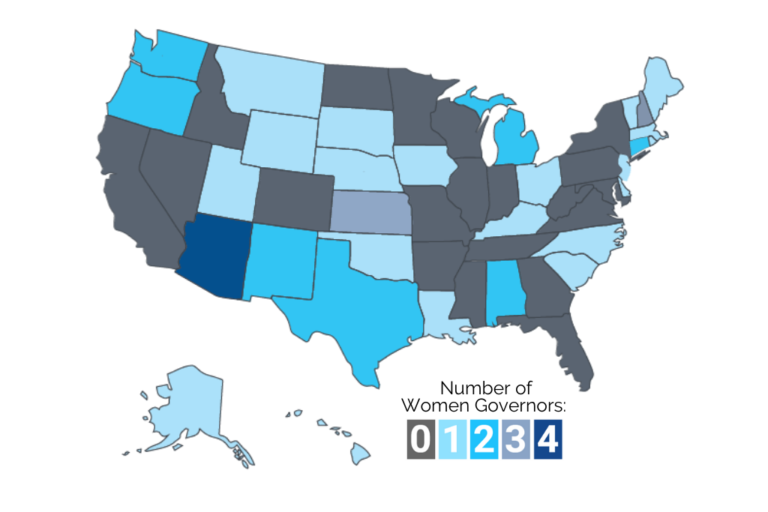In 2018, a record number of women were elected to Congress, and it was…
Dismantling the “Imagination Barrier”

When my boss Barbara Lee started her work to elect more women in politics over two decades ago, she focused on governor’s offices because she saw them as a key path to putting a woman in the White House. At the time, only 16 women had ever served as governor in the history of our country. Barbara believed—and still does!—that electing women to executive office would lead to better representation for women in all sectors and levels of office.
Undoubtedly, we had made countless strides since the Barbara Lee Family Foundation opened our doors in 1998. The total number of women governors is up to 45 today, and as women declare 2022 candidacies from Wisconsin to here in Massachusetts, I am hopeful that we will soon have even more.
Despite those advances, though, the stats still undeniably show disparity: nineteen states have never had a woman governor. We have only ever had nine women governors at one time (first in 2004, in 2007, 2019, and again in 2021). There have been just three women of color governors (Susana Martinez and Michelle Lujan Grisham, both in New Mexico, and Nikki Haley in South Carolina). Black Americans make up approximately 13% of the country’s population, yet there has never been a Black woman governor.
To put it in perspective, if we put all the women in history who have every served as governor in one New York City subway car, they not only could all fit, they would get their own seat. A recent analysis found that there were fewer women among Republican governors than there were men named Doug, Eric, and Phil. And men named John were more common among Democratic governors than women.
At the Barbara Lee Family Foundation, we frequently talk about the “imagination barrier” that keeps voters from envisioning women and women of color in elected offices that have been held by white men for years or even centuries. When we asked focus group participants to picture a hypothetical governor earlier this year, the majority pictured a man.
Just this month, a study in the American Political Science Review researched how children perceive politics. The disheartening results showed the impact of having male-dominated political spaces on girls’ interests and ambitions, concluding that “children perceive politics to be a male-dominated space, and with age, girls increasingly see political leadership as dominated by male leaders.”
In our newly updated Keys to Elected Office: The Essential Guide for Women, a greatest hits compilation of our studies of every woman gubernatorial candidate’s campaign on both sides of the aisle for over two decades, we outline how to finally tear down the imagination barrier—electing more women, for one, so that voters have new visions of leadership. But there are other ways to bust the barrier, too, such as seeing women campaign for executive office, demonstrating their qualifications, and highlighting their expertise. For those of us who are not running or holding office ourselves, we can also take Barbara’s advice and encourage the smart, qualified women in our lives who we would like to see as governor to step up and run.
Next year, at least five of the current nine women governors currently in office will run for reelection. We will be watching closely to see not only whether they prevail, but also how they and other first-time candidates continue to shift imaginations across the country.






